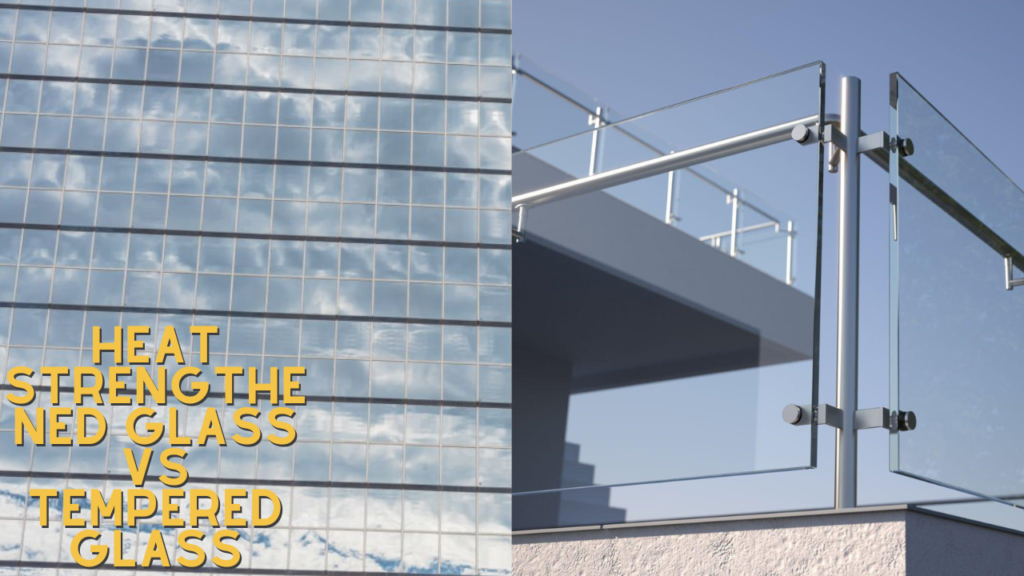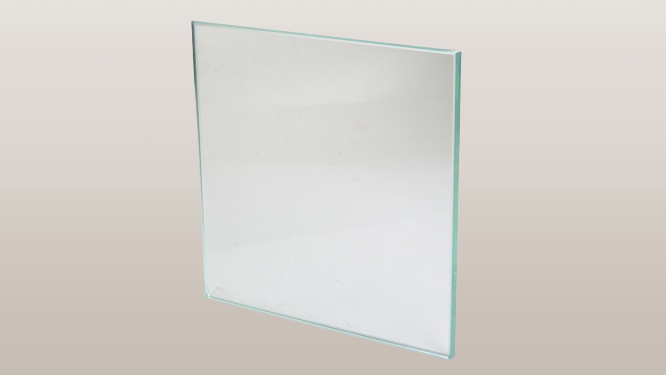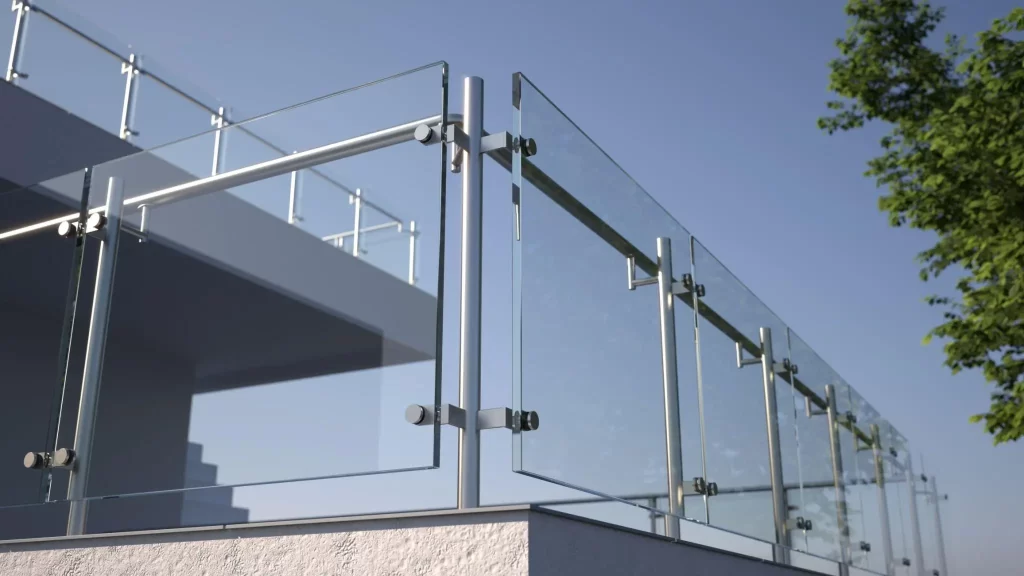
When it comes to choosing the right type of glass for your home or business, safety and durability are top priorities. Two popular options are heat-strengthened glass and tempered glass, both of which offer enhanced resistance to impact and thermal stress. However, there are important differences between these two types of glass that can help you make an informed decision. For your glass related projects you can call Us at tel:+1 602 300 0851
What Is Heat Strengthened Glass?
Heat-strengthened glass is a type of safety glass processed by heating the glass to a specific temperature, then rapidly cooling it using a process called “quenching.” This process increases the glass’s strength and resistance to thermal stress, making it less likely to shatter or break due to sudden changes in temperature.

Heat-strengthened glass is not as strong as tempered glass, but it’s still stronger than regular glass. It’s often used in applications where tempered glass is not required, such as in shower doors, glass tables, and car windshields.
What Is Tempered Glass?
Tempered glass, also known as toughened glass, is a type of safety glass processed by heating the glass to a specific temperature, then rapidly cooling it using a process called quenching. This procesincreases the glass’s strength and resistance to thermal stress, making it less likely to shatter or break due to sudden changes in temperature.

Tempered glass is significantly stronger than heat-strengthened glass, with a minimum surface compression rating of 25 MPa (megapascals) compared to the latter’s rating of only 6MPa. Additionally, tempered glass undergoes a process called”ion exchange,”which alters its chemical structure and makes it even more robust.
Benefits Of Using Heat Strengthened Glass
There are several benefits associated with using heat strengthened glass instead of tempered glass. Some of these benefits include:
- Cost Savings: Heat strengthened glass is typically less expensive than tempered glass, making it a more cost effective option for certain applications.
- Improved Thermal Stress Resistance: Heat strengthened glass has improved thermal stress resistance compared to regular glass, making it better suited for applications where it will be exposed to extreme temperature fluctuations.
- Reduced Breakage Risk: Due to its increased strength, heat strengthened glass is less likely to shatter or break due to sudden impacts or other stresses.
- Enhanced Optical Clarity: Heat strengthened glass tends to maintain excellent optical clarity even when subjected to high temperatures or intense sunlight.
- Greater Security: Because heat strengthened glass is stronger than regular glass, it provides greater security against forced entry or other malicious acts.
Benefits Of Using Tempered Glass
There are certain situations where heat strengthened glass may be preferred over tempered glass. These situations include:
- Showers Doors: Since shower doors aren’t subject to the same level of stress as other parts of the home, heat strengthened glass can provide adequate protection at a lower price point.
- Glass Tables: The top pane of glass tables does not require the same degree of fortification as other components because it is not subjected to the same amount of stress. As a result, heat strengthened glass can offer sufficient protection while saving money.
- Car Windshields: Although tempered glass is usually employed for automobile windshields, heat strengthened glass may occasionally be utilized, particularly in older vehicles or those with fewer resources.
Advantages And Disadvantages Of Heat Strengthened Glass
Like any material, heat strengthened glass has its advantages and disadvantages. Here are some of the main pros and cons:
Advantages:
Cost-effective: Heat strengthened glass is generally cheaper than tempered glass, making it a more affordable option for many applications.
Improved thermal stress resistance: Heat strengthened glass has improved resistance to thermal stress, which means it can withstand extreme temperature fluctuations without breaking.
Reduced breakage risk: Heat strengthened glass is less likely to shatter or break due to sudden impacts or other stresses.
Enhanced optical clarity: Heat strengthened glass maintains excellent optical clarity, even when subjected to high temperatures or intense sunlight.
Disadvantages:
Lower strength than tempered glass: Heat strengthened glass is not as strong as tempered glass, which means it may not be suitable for applications that require maximum strength and durability.
Limited thermal resistance: While heat strengthened glass has improved thermal resistance compared to regular glass, it may not be able to withstand extremely high temperatures.
Not recommended for all applications: Heat strengthened glass may not be suitable for applications that require maximum strength and durability, such as architectural glass, automotive windshields, and shower enclosures.
Advantages And Disadvantages Of Tempered Glass
Like any material, heat strengthened glass has its advantages and disadvantages. Here are some of the main pros and cons:
Advantages Of Tempered Glass:
Increased Strength: Tempered glass is up to five times stronger than regular glass, making it more resistant to impacts, thermal stress, and other forms of stress.
Improved Thermal Resistance: Tempered glass can withstand extreme temperature fluctuations without breaking or shattering, making it ideal for applications such as oven doors, cookware, and scientific equipment.
Reduced Breakage Risk: Tempered glass is designed to break into small, blunt pieces rather than sharp shards, reducing the risk of injury or damage if it is broken.
Enhanced Optical Clarity: Tempered glass maintains excellent optical clarity, making it suitable for applications where clear vision is essential, such as automotive windshields and eyewear.
Durability: Tempered glass is highly resistant to scratches, cracks, and other forms of wear and tear, making it a popular choice for high-traffic areas such as commercial buildings and public spaces.
Disadvantages Of Tempered Glass:
Higher Cost: Tempered glass is more expensive than regular glass, due to the additional processing steps involved in its production.
Limited Flexibility: Tempered glass cannot be bent or reshaped once it has been tempered, limiting its versatility in certain applications.
Noise Sensitivity: Tempered glass can be sensitive to noise and vibrations during the tempering process, which can affect its quality and performance.
Prone to Nickel Sulfide Inclusions: Tempered glass can sometimes contain nickel sulfide inclusions, which can cause spontaneous breakage due to thermal stress. However, this risk can be minimized through proper quality control measures.
Not Suitable for All Applications: While tempered glass is incredibly strong and durable, it may not be suitable for all applications, such as very large or irregularly shaped glass panels, which may require specialized manufacturing techniques.
Contact Us For Unique Products And Services
Frequently Asked Questions
Heat-strengthened glass is a type of safety glass that is processed by heating the glass to a specific temperature, then rapidly cooling it using a process called “quenching.” This process increases the glass’s strength and resistance to thermal stress, making it less likely to shatter or break due to sudden changes in temperature.
No, heat-strengthened glass is not the same as tempered glass. While both types of glass are processed using heat and cooling, tempered glass goes through a more extensive process that includes a second round of heating and cooling, which makes it even stronger and more resistant to impacts.
Heat-strengthened glass offers several benefits, including improved thermal stress resistance, reduced breakage risk, and enhanced optical clarity. It is also a cost-effective alternative to tempered glass.
No, heat-strengthened glass may not be suitable for all applications. It is typically used for applications where the risk of breakage is low to moderate, such as shower doors, glass tables, and car windshields. For applications that require maximum strength and durability, tempered glass may be a better choice.
Tempered glass is a type of safety glass that is processed using a combination of heat and cooling to increase its strength and durability. It is up to five times stronger than regular glass and is designed to break into small, blunt pieces rather than sharp shards.
Tempered glass is made by heating the glass to a specific temperature, then rapidly cooling it using a process called “quenching.” This process is repeated multiple times to achieve the desired level of strength and durability.
Tempered glass offers several benefits, including increased strength, improved thermal resistance, reduced breakage risk, and enhanced optical clarity. It is also a safer choice than regular glass, as it breaks into blunt pieces rather than sharp shards.
Tempered glass can be used for a wide range of applications, including architectural glass, automotive windshields, shower enclosures, and more. It is a popular choice for high-traffic areas and applications where safety is a concern.
Conclusion
In conclusion, heat strengthened glass is a type of safety glass that offers improved strength and thermal stress resistance compared to regular glass. While it may not be as strong as tempered glass, it is a cost-effective alternative that can be used in a variety of applications. By understanding the manufacturing process, advantages, and disadvantages of heat strengthened glass, you can make informed decisions about whether it’s the right choice for your needs. If you have any further questions or concerns, feel free to contact us today!
